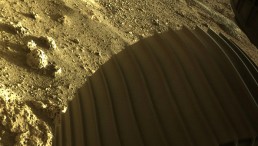A scientist now claims to have uncovered the cause of the Pharaoh's curse.
Mystery of Pharaoh's Curse
In 1922, over 20 people who opened the tomb of King Tutankhamun ended up dying due to what is presumed to be the "Pharaoh's Curse."
Based on ancient Egyptian text, death by a disease that doctors cannot diagnose is threatened to whoever disturbs the remains of the royal mummies.
However, according to Ross Fellowes, there could be a biological explanation behind these mysterious deaths.
ALSO READ: King Tut Tomb: Famous Egyptian Pharoah's Grave Too Small, Burial Rushed
Secrets Unlocked
According to the study "The Pharaoh's Curse: New Evidence of Unusual Deaths Associated With Ancient Egyptian Tombs," the cause of the deaths was radiation poisoning coming from natural elements that contained toxic waste and uranium that was deliberately placed within a sealed vault.
Exposure to substances could have triggered particular cancers, such as the one that took archaeologist Howard Carter's life.
Over a century ago, Howard Carter was the first to walk inside the mysterious tomb. He likely died of a heart attack in 1939 after suffering from Hodgkin's lymphoma for a long time. Radiation poisoning has been previously associated with the cause of such cancer.
Another person who walked through the tomb was Lord Carnarvon. He died due to blood poisoning five months post-discovery. He had a severe mosquito bite that ended up infected after getting cut with a razor.
Arthur Weigall, a British Egyptologist, also attended the tomb opening. This was where he got accused of inciting the curse's myth. Weigall ended up dying of cancer at the age of 54.
Other individuals who were part of the excavation ended up dying of stroke, asphyxia, heart failure, diabetes, poisoning, pneumonia, X-ray exposure, and malaria. All of them died during their 50s.
This theory proves that the tomb was indeed cursed, though this was biologically and deliberately rather than in a supernatural way.
However, according to inscriptions that were found in other burials across Egypt, it appears that ancient people were aware of these toxins. The text notes that certain areas were forbidden due to evil spirits.
The study explains that high radiation levels were also documented across the tomb ruins of the Old Kingdom. This was observed in two Giza areas and several Saqqara underground tombs. Such conclusions were also made across the Osiris tomb situated in Giza.
According to Fellowes, intense radioactivity was linked with two stone coffers, especially the ones from the inside. Professor Robert Temple also explains that the coffers consisted of basalt. This determined that they were the radiation's point source.
Other studies have also measured the direction of radon gas at various tomb locations within Saqqara.
Ambient concentrations of radon were found in six areas across the ruins of Saqqara: the South Tomb, the Serapeum tomb tunnels, and the magazines of the Pyramid of Djoser.
Moreover, thousands of pots excavated in the 1960s under the Step Pyramid contained as many as 200 tons of substances that have yet to be identified. This suggests that the toxins could have been buried alongside the mummified remains.
Fellowes notes that strong radiation has been attributed loosely to the bedrock's natural background. However, levels are unusually localized and to a high extent. This does not align with limestone bedrock characteristics. Instead, it implies other unnatural sources.
RELATED ARTICLE: Tutankhamun: Controversial Theory Challenges Cause of His Death, Suggesting Fatal Drink-Driving Crash
Check out more news and information on Ancient Egypt in Science Times.















